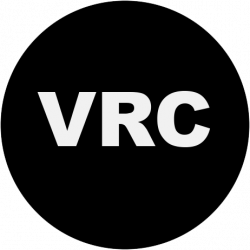The Getty’s online magazine The Getty Iris has launched the series Medieval Manuscripts Alive, which features expert speakers reading the languages of the Middle Ages from centuries-old books. It aims to bring the manuscripts’ accompanying illuminations to life through sound. Each reading is accompanied by a translation into English and a brief description of the relationship between the text and image. In collaboration with the British Library’s Language & Literature audio collection, the Getty’s manuscripts collection will soon be heard in 15 languages, including Coptic, Ge’ez, Arabic and more.
35 Million Getty Images Free to Embed and Use Online
Yesterday, Getty Images released more than 35 million images that users can embed on websites and social media posts for free, so long as the images are for editorial and non-commercial purposes. With the embed feature, Getty Images includes a credit line and link to each image that users post. For a list of images available to embed, click here.
There’s been quite a lot of coverage about this monumental release of “free” images, including great articles from the Atlantic on “Why Getty Going Free Is Such a Big Deal, Explained in Getty Images,” and the Verge on “The world’s largest photo service just made its pictures free to use.” It’s important to note that not all Getty Images are free to use, and it’s very likely that contemporary photojournalism images, for example, will remain behind the paywall.
Also fun to think about on a Friday: How many photos have ever been taken?
The Getty Adds Special Collections Materials to Open Content Program
In mid-October, the Getty Research Institute’s Special Collections announced that it has added 5,400 artwork images from special collections to the Open Content Program, which brings the total number of images that are freely available without copyright restrictions to more than 10,000.
The newly added content includes “artist’ sketchbooks, drawings and watercolors, rare prints from the 16th through the 18th century, 19th-century architectural drawings of cultural landmarks, and early photographs of the Middle East and Asia.” For example, there are more than thirty early photographs from Mayan archaeological sites.
For more information, check out our previous blog post on the Getty’s Open Content Program, or explore the 10,000 public domain images here!
Via The Getty Iris
Image: [Nunnery complex (Uxmal, Mexico): detail of facade frieze], 1882, GRI Digital Collections, 94-F125.
Getty Releases New Atlas of Photo Processes
The Getty Conservation Institute recently released a new resource called the Atlas of Analytical Signatures of Photographic Processes, which provides a growing collection of in-depth PDF guides of various photographic processes and their variants. The goal of the project is to help researchers and those working with photography collections correctly identify the photographic process of specific prints in their collections so as to make the safest decisions regarding the conservation, exhibition, and storage of the works.
The Atlas currently contains guides to eleven processes, including Albumen, Silver Gelatin, and Photogravure, and combines historic information about the process with information about how artists were using the technique in the darkroom, as well as contemporary conservation science knowledge.
For more information, explore the Atlas of Analytical Signatures of Photographic Processes.
Via ArtDaily
Getty Research Portal
On Thursday, May 31, 2012 the Getty Research Institute will launch the Getty Research Portal, an unprecedented resource that will provide universal access to digitized texts in the field of art and architectural history.
The Getty Research Portal is a free online search gateway that aggregates descriptive metadata of digitized art history texts, with links to fully digitized copies that are free to download. Art historians, curators, students, or anyone who is culturally curious can unearth these valuable sources of research without traveling from place to place to browse the stacks of the world’s art libraries. There will be no restrictions to use the Getty Research Portal; all anyone needs is access to the internet.


